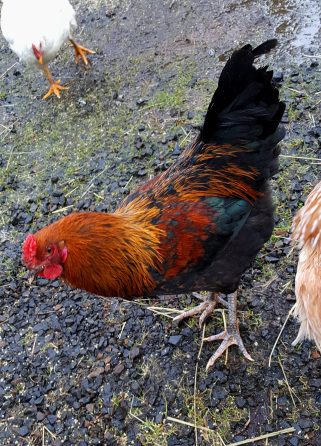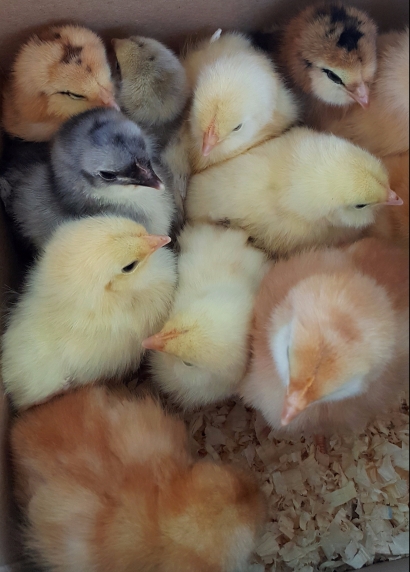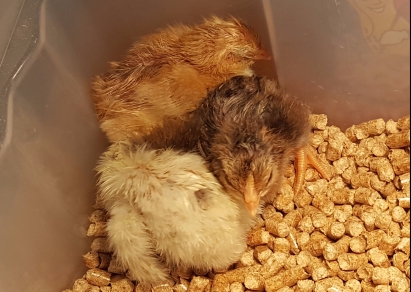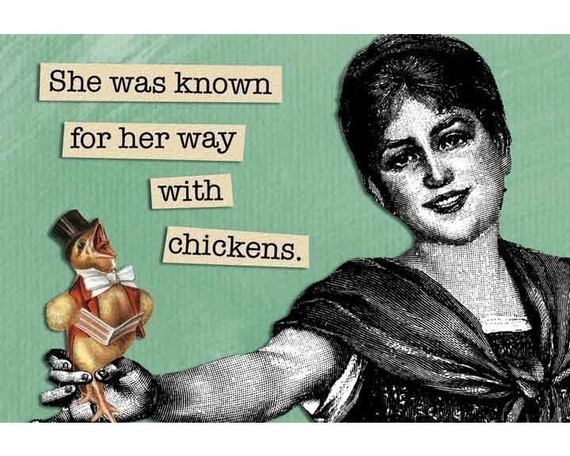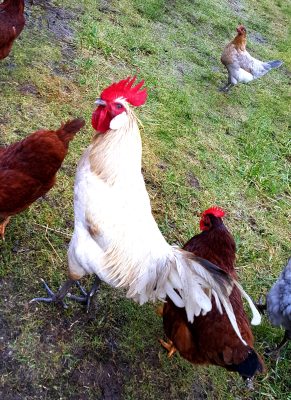When I was a girl, my grandparents owned 88 acres at the foot of the Ozarks, in Arkansas. They had cattle, horses, some pigs, guinea fowl, and a garden. My grandma also had several different fruit trees in a small orchard; apple, pear, plum, cherry, and persimmon. I remember getting in trouble and our punishment was picking rocks out of the very large garden. I used to swear that Grandpa put those rocks back every time, because we never ran out. I know better now. The rocks just magically reappear in your garden year after year. One of my fonder memories, however, was when it was time to can everything we grew all year long. We would spend days in the kitchen canning corn, beans, okra, tomatoes, and beets, to name a few. The really cool thing was that it wasn’t just us women folk. My grandpa and my brother were right there in the kitchen with us. Everybody had a job to do, and we benefited from it for the rest of the year.
Now that we have our land I am happy to say that I have followed in the footsteps of my grandparents. We also have the animals, the garden and the fruit trees. We also spend each summer and fall canning and preserving as much as we can to make it through the winter. We tend to alternate what we can, though. 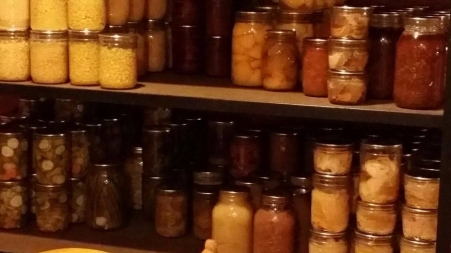 For instance, we got two tuna off the boat of a friend for two dollars a pound year before last. If you have never canned tuna, it is fairly simple but time consuming. We process in ½ pint jars by cutting the filet the size of the jar, adding a small clove of garlic and some salt and pepper, and processing for 90 minutes at 11 pounds of pressure. From two tuna, we ended up with approximately 34 pints, which lasted us two seasons. We will be ready to can tuna again this season. Considering a 5 ounce can of tuna can run you approximately $1, and of that 5 ounces, approximately one ounce is water or oil, you are paying about $0.25 an ounce for tuna at the store. We don’t process with water or oil, so the weight is all tuna. We paid $100 for the tuna we purchased, whole. The finished 34 pints provided 544 ounces of meat for a finished price of $0.18 an ounce, for a savings of $38.08 over two years. I know that doesn’t seem like a lot of money, but knowing what is in your jar of tuna and how it was processed is an added value to me.
For instance, we got two tuna off the boat of a friend for two dollars a pound year before last. If you have never canned tuna, it is fairly simple but time consuming. We process in ½ pint jars by cutting the filet the size of the jar, adding a small clove of garlic and some salt and pepper, and processing for 90 minutes at 11 pounds of pressure. From two tuna, we ended up with approximately 34 pints, which lasted us two seasons. We will be ready to can tuna again this season. Considering a 5 ounce can of tuna can run you approximately $1, and of that 5 ounces, approximately one ounce is water or oil, you are paying about $0.25 an ounce for tuna at the store. We don’t process with water or oil, so the weight is all tuna. We paid $100 for the tuna we purchased, whole. The finished 34 pints provided 544 ounces of meat for a finished price of $0.18 an ounce, for a savings of $38.08 over two years. I know that doesn’t seem like a lot of money, but knowing what is in your jar of tuna and how it was processed is an added value to me.
We also can corn every other year. We get a lot of rain and corn doesn’t always grow well where we are. We have a farmer in the Willamette Valley, not too far from us, that raises corn and we purchase it from him. We usually buy 500 ears for $50. We cut the corn off the ears and raw pack in a sweet brine and process filled jars in a pressure canner at ten pounds pressure for 55 minutes for pints and 1 hour and 25 minutes for quarts. From the 500 ears we canned 42 pints and 15 quarts. A 15.5 ounce can of corn costs approximately $0.70 a can. Our pints cost us $0.69 a pint. Again, not a substantial savings, but I know where my food comes from, how much sugar or sodium is in it, and how it was processed.
One thing we process every year is applesauce. My kids love applesauce! This last year we had so many apples that we were giving them away. We had made A LOT of applesauce, apple butter, and apple pie filling and still had so many left over. When, after giving them away we still had 3 buckets left, we decided to juice the left over apples for juice. Oh. My. Gosh. Best decision ever. 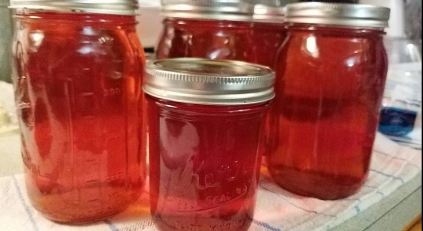 We simply put the apples through a juicer and then filtered it through cheese cloth twice. Once that was done, we put it in a (this is muy importante!) non-reactive pan. Trust me on this, we learned the hard way! If you don’t, your juice tastes like sucking on a penny. Blech! You set the heat to medium low and let it come up slowly to 190°. Once at 190° you keep it there for 3 minutes. This pasteurizes the juice. As soon as you have pasteurized the juice, pour into hot, sterile jars and process in a boiling water bath 5 minutes for pints and quarts and 10 minutes for half gallons. No sugar, no preservatives, nothing extra… just juice. It was seriously the sweetest, best tasting, prettiest juice I have ever had in my life.
We simply put the apples through a juicer and then filtered it through cheese cloth twice. Once that was done, we put it in a (this is muy importante!) non-reactive pan. Trust me on this, we learned the hard way! If you don’t, your juice tastes like sucking on a penny. Blech! You set the heat to medium low and let it come up slowly to 190°. Once at 190° you keep it there for 3 minutes. This pasteurizes the juice. As soon as you have pasteurized the juice, pour into hot, sterile jars and process in a boiling water bath 5 minutes for pints and quarts and 10 minutes for half gallons. No sugar, no preservatives, nothing extra… just juice. It was seriously the sweetest, best tasting, prettiest juice I have ever had in my life.
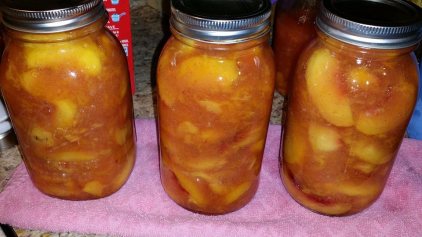
Some of the other things we really like to can are spaghetti sauce, baked beans, BEETS (yum), etc. I like to play around with flavors for jam and see what I can come up with. I’ve canned a mango habanero jam that is excellent on cream cheese and crackers or as a glaze for ham. Another jam I made was a pina colada jam that is pretty much like eating desert from a jar; so yummy. I’ve also done peach salsa, peach pie filling and lemon curd. I do love the curds. Mmmmmm!
Canning can be very labor and time intensive. You really have to ask yourself if taking the time to process your own food is worth the extra ~$50 a year you save. For me, it really isn’t about the money saved. It’s about teaching my kids a skill, teaching them to be self-sufficient. Taking the time to know where my food comes from and what’s in it. Hearing the “plink” of the lid when the jar seals. These are all things that my kids will remember when they look back. It’s about heritage and history. These are the things that are important to me. I hope they will be important to my kids, as well.





